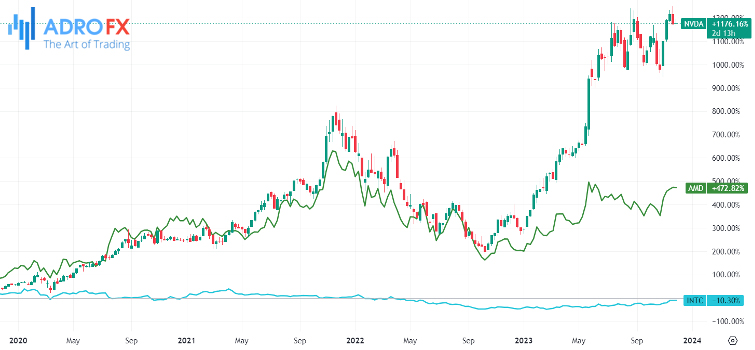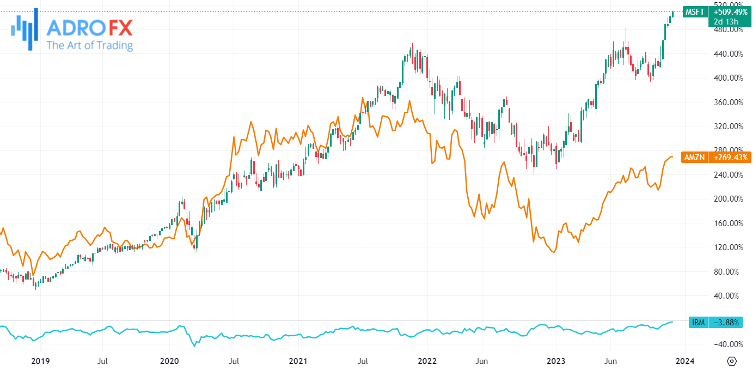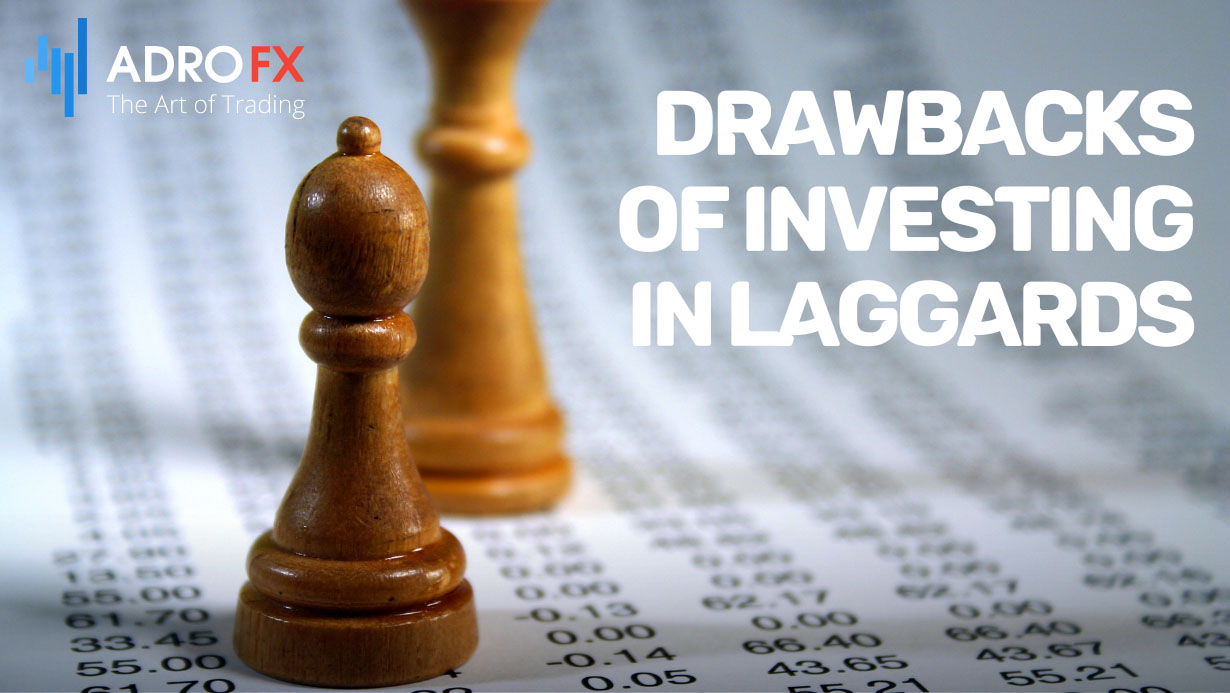Unlocking Investment Potential: Navigating Laggard Stocks in the Dynamic Market Landscape

In the dynamic realm of stocks and investments, the term "laggards" holds significant implications for investors seeking to navigate the complexities of the financial markets. Laggards are stocks or securities that have failed to keep pace with the overall market or their industry counterparts, signaling underperformance over a defined period. This article delves into the nuances of laggard stocks, exploring their categorization alongside leaders and market performers. As we dissect the characteristics and risks associated with these underperforming assets, we aim to equip investors with a comprehensive understanding of how to identify, analyze, and approach laggards in the ever-evolving landscape of investment opportunities.
What Are Laggards in Stocks?
In the context of stocks and investments, "laggards" refer to stocks or securities that have underperformed compared to the overall market or their peers over a certain period of time. These are investments that have shown slower growth or have experienced declines in value relative to other similar assets.
Investors often categorize stocks into different groups based on their performance. The three main categories are:
- Leaders/Outperformers
These are stocks that have performed exceptionally well, surpassing the market average or outperforming their industry peers.
- Laggards/Underperformers
Laggards are stocks that have not performed well and have lagged behind the market or their industry counterparts. Investors might consider these stocks to be potential candidates for improvement or may choose to divest from them if they believe the underperformance will persist.
- Market Performers
These are stocks that have performed roughly in line with the overall market or their industry.
Investors often analyze the performance of stocks based on various financial metrics, such as earnings growth, revenue growth, profit margins, and other key indicators. Laggards may be subject to further scrutiny to determine whether their underperformance is due to temporary factors or if there are more fundamental issues affecting the company.
Take Intel, for instance; it can be classified as a laggard. Despite being a technology pioneer, Intel has been overtaken by competitors such as Advanced Micro Devices (AMD) and Nvidia (NVDA). While AMD and Nvidia are experiencing growth, Intel is falling behind in performance.

IBM is another illustration of a lagging company. Once the foremost tech giant in the United States, IBM has been surpassed by companies like Microsoft and Amazon.

The technology and clean energy sectors have garnered significant investor attention in recent years, with notable success. Conversely, investors have been divesting from traditional sectors like retail and oil and gas.
It's important to note that the classification of a stock as a leader, laggard, or market performer can be subjective and may vary depending on the time frame considered for evaluation. Additionally, past performance is not always indicative of future results, so investors should carefully consider a variety of factors when making investment decisions.
How to Identify Laggard Stocks
Identifying laggard stocks involves evaluating companies whose stock prices have underperformed relative to the broader market or their industry peers. Here are several factors and strategies to consider when identifying laggard stocks:
Performance Metrics
- Price Performance: Compare the stock's historical performance against relevant benchmarks (e.g., S&P 500, sector indices). Look for stocks that have consistently lagged behind over various time frames.
- Total Return: Consider total return, which includes dividends and stock price appreciation. Some laggard stocks may have lower total returns due to weak dividend yields or negative price movements.
Fundamental Analysis
- Financial Statements: Analyze the company's financial statements to assess its financial success, revenue growth, and overall financial health. Laggard stocks may have weaker financial fundamentals compared to their peers.
- Earnings Trends: Examine the company's earnings history and trends. A pattern of declining or inconsistent earnings may contribute to a stock's laggard status.
Valuation Metrics
- Price-to-Earnings (P/E) Ratio: Compare the P/E ratio of the laggard stock with industry averages and competitors. A low P/E ratio may indicate undervaluation, but it's essential to understand the reasons behind it.
- Price-to-Book (P/B) Ratio: Assess the P/B ratio to determine whether the stock is trading below its book value. A low P/B ratio may suggest potential value, but again, investigate the underlying reasons.
Dividend Yield
Evaluate the dividend yield of the laggard stock. A high yield may attract income-seeking investors, but it's crucial to investigate whether the company can sustain its dividend payments.
Market Sentiment
Monitor market sentiment and news related to the company. Negative news, such as legal issues, management problems, or industry headwinds, can contribute to a stock's underperformance.
Analyst Ratings
Check analyst ratings and recommendations for the stock. Consistently low ratings or downward revisions may indicate a lack of confidence in the company's prospects.
Industry Trends
Consider broader industry trends and how the laggard stock compares to its peers. If the industry is performing well, a stock that consistently lags behind may be a cause for concern.
Management and Strategy
Evaluate the effectiveness of the company's management and its strategic initiatives. A lack of clear direction or ineffective leadership can contribute to a stock's underperformance.
Macro-Economic Factors
Consider macroeconomic factors such as interest rates, inflation, and economic indicators. Laggard stocks may be more sensitive to adverse economic conditions.
Risk Assessment
Assess the overall risk profile of the stock, including factors like debt levels, liquidity, and exposure to external risks.
Remember, identifying laggard stocks is just the first step. Thorough research and understanding the reasons behind a stock's underperformance are crucial before making investment decisions. Additionally, consider consulting with financial professionals or conducting further research based on your specific investment goals and risk tolerance. 
Drawbacks of Investing in Laggards
While investing in laggard stocks can sometimes present opportunities for value investors, it's essential to be aware of the drawbacks and risks associated with such investments. Here are some potential drawbacks:
- Value Trap
Laggard stocks are often characterized by low valuations, which may attract investors looking for bargains. However, some stocks may be cheap for a reason, and investing in them without a thorough understanding of the underlying issues can lead to value traps.
- Poor Fundamentals
Laggard stocks often have weaker financial fundamentals compared to their peers. This may include lower lucrativeness, higher debt levels, or inconsistent earnings. Investing in companies with poor fundamentals carries the risk of further deterioration in financial health.
- Limited Growth Prospects
Laggard stocks may be facing challenges that limit their growth potential. This could be due to issues within the company, industry-specific challenges, or broader economic headwinds. Investing in stocks with limited growth prospects may result in stagnant or declining returns.
- Market Sentiment and Perception
Investor sentiment and perception play a significant role in stock performance. Laggard stocks may continue to be overlooked or shunned by the market due to negative sentiment. Changing the perception of a struggling company can be challenging, even if there are positive developments.
- Dividend Risks
High dividend yields in laggard stocks may be attractive, but investors should be cautious. If a company is struggling, it may have difficulty sustaining dividend payments. An investment based solely on dividend yield without considering the company's ability to generate cash flow is risky.
- Liquidity Concerns
Some laggard stocks may have lower liquidity, making it difficult to buy or sell shares without impacting the stock price. This lack of liquidity can result in wider bid-ask spreads and increased trading costs.
- Uncertain Turnaround
Investing in laggard stocks often relies on the belief that the company will experience a turnaround. However, predicting when and how a turnaround will occur is challenging. There is a risk that the expected recovery may take longer than anticipated or may not materialize at all.
- Industry Trends
Laggard stocks may belong to industries facing long-term challenges or structural changes. Even if a company addresses its internal issues, external industry headwinds can continue to impact performance.
- Management Issues
Laggard stocks may have management problems that contribute to their underperformance. If the issues are related to ineffective leadership, a change in management may be necessary for a successful turnaround.
- Opportunity Cost
While capital is tied up in laggard stocks, there may be missed opportunities elsewhere in the market. Investing in stocks with better growth prospects and stronger fundamentals could lead to more favorable returns.
Investors considering laggard stocks should conduct thorough due diligence, assess the risks involved, and carefully evaluate whether the potential rewards justify the risks. Diversification and a long-term perspective are essential components of managing risk in any investment strategy.

How to Day Trade Lagging Stocks
In day trading, the approach to market leaders and lagging stocks is generally similar. Here's a recommended strategy for day traders:
- Extended & Premarket Hours
Begin your day by examining extended or premarket hours, providing insights into stock performance before the market officially opens. Platforms like Market Chameleon and Investing.com can help you identify stocks experiencing significant rises or falls during this period.
- Why Stocks Are Moving
Investigate the reasons behind premarket movements. News related to earnings, management changes, and analyst upgrades or downgrades often drives stock fluctuations. A quick online search can provide valuable insights.
- Identify Support and Resistance Levels
Utilize your charting provider to pinpoint key support and resistance levels. Support acts as a price floor, where stocks resist falling below, while resistance serves as a ceiling, hindering upward movement. Drawing these levels across multiple time frames, from daily to 5-minute charts, aids in identifying critical points.
- Use Pending Orders
Consider employing pending orders for efficient trading. Specify to your broker the desired entry point through Buy Stop or Sell Stop orders (buying above or shorting below the current price) and Buy Limit or Sell Limit orders (buying below or selling above the current price).
- Stop Loss and Take Profit
Implement a Stop Loss and Take Profit for all initiated orders. This risk management practice ensures you have predefined exit points for both potential losses and gains. Whether trading lagging or strong stocks, this step remains consistent.
By following these steps, day traders can navigate both market leaders and lagging stocks effectively, utilizing information from premarket hours, understanding the driving factors behind stock movements, identifying key support and resistance levels, using pending orders, and implementing Stop Loss and Take Profit strategies.
Summary
In the dynamic landscape of investments, where markets constantly evolve and stocks fluctuate, understanding and navigating laggard stocks is a crucial aspect of informed decision-making. Laggards, by definition, represent underperforming assets that have not kept pace with the broader market or their industry peers. This article has provided a comprehensive exploration of laggard stocks, from their categorization alongside leaders and market performers to the identification and analysis of their characteristics and risks.
In the context of day trading, the approach to market leaders and laggard stocks shares similarities, emphasizing the importance of extended and premarket hours, understanding the driving forces behind stock movements, identifying key support and resistance levels, and employing risk management strategies.
In conclusion, navigating the realm of laggard stocks requires a blend of diligence, analytical acumen, and a nuanced understanding of market dynamics. As investors tread this path, the lessons learned from the exploration of laggard stocks will undoubtedly contribute to a more informed and strategic approach to investment decision-making in the ever-evolving financial landscape.
About AdroFx
Established in 2018, AdroFx is known for its high technology and its ability to deliver high-quality brokerage services in more than 200 countries around the world. AdroFx makes every effort to keep its customers satisfied and to meet all the trading needs of any trader. With the five types of trading accounts, we have all it takes to fit any traders` needs and styles. The company provides access to 115+ trading instruments, including currencies, metals, stocks, and cryptocurrencies, which make it possible to make the most out of trading on the financial markets. Considering all the above, AdroFx is the perfect variant for anyone who doesn't settle for less than the best.










